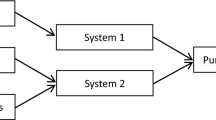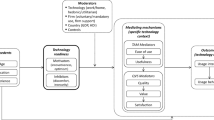Abstract
Although length of stay is a relevant variable in destination management, little research has been produced connecting it with tourists’ post-consumption behaviour. This research compares the post-consumption behaviour of same-day visitors with overnight tourists in a sample of 398 domestic vacationers at two Mediterranean heritage-and-beach destinations. Although economic research on length of stay posits that there are destination benefits in longer stays, same-day visitors score higher in most of the post-consumption variables under study. Significant differences arise in hedonic aspects of the tourist experience and destination loyalty. Thus, we propose that length of stay can be used as a segmentation variable. Furthermore, destination management organisations need to consider length of stay when designing tourism policies. The tourist product and communication strategies might be adapted to different vacation durations.
Similar content being viewed by others
References
Agarwal, V. B., & Yochum, G. R. (1999). Tourist spending and the race of visitors. Journal of Travel Research, 38(2), 173–176.
Alegre, J., & Pou, L. (2006). The length of stay in the demand for tourism. Tourism Management, 27, 1343–1355.
Alegre, J., Mateo, S., & Pou, L. (2011). A latent class approach to tourists’ length of stay. Tourism Management, 32, 555–563.
Alén, E., Nicolau, J., Losada, N., & Domínguez, T. (2014). Determinant factors of senior Tourists’ length of stay. Annals of Tourism Research, 49, 19–32.
Assaker, G., & Hallak, R. (2013). Moderating effects of tourists’ novelty-seeking tendencies on destination image, visitor satisfaction, and short-and long-term revisit intentions. Journal of Travel Research, 0047287513478497.
Astrapellos, K., Costa, G., Astrapellou, X., & Kosnstantinos, A. (2010). The quality of quality of the service experience in outdoor activities programs. International Journal of Sport Management, Recreation & Tourism, 5, 77–87.
Barros, C., & Machado, L. (2010). The length of stay in tourism. Annals of Tourism Research, 37(3), 692–706.
Battour, M., Battor, M., & Ismail, M. (2012). The mediating role of tourist satisfaction: a study of Muslim tourists in Malaysia. Journal of Travel & Tourism Marketing, 29(3), 279–297. doi:10.1080/10548408.2012.666174.
Bieger, T., & Laesser, C. (2002). Market segmentation by motivation: the case of Switzerland. Journal of Travel Research, 41, 68–76.
Bigne, J. E., & Andreu, L. (2004). Emotions in segmentation: an empirical study. Annals of Tourism Research, 31(3), 682–696.
Chen, C., & Chen, F. (2010). Experience quality, perceived value, satisfaction and behavioral intentions for heritage tourists. Tourism Management, 31, 29–35.
Chi, C. G.-Q., & Qu, H. (2008). Examining the structural relationships of destination image, tourist satisfaction and destination loyalty: an integrated approach. Tourism Management, 29(4), 624–636.
Coghlan, A., & Pearce, P. (2010). Tracking affective components of satisfaction. Tourism and Hospitality Research, 10(1), 42–58.
Cohen, S. A., Prayag, G., & Moital, M. (2014). Consumer behaviour in tourism: concepts, influences and opportunities. Current Issues in Tourism, 17(10), 872–909.
Cordente-Rodríguez, M., Mondéjar-Jiménez, J. A., & Villanueva-Álvaro, J. J. (2014). Sustainability of nature: the power of the type of visitors. Environmental Engineering and Management Journal, 13, 2437–2447.
Crompton, J. L., & McKay, S. L. (1997). Motives of visitors attending festival events. Annals of Tourism Research, 24(2), 425–439.
Cronin, J. J., Brady, M. K., & Hult, G. T. M. (2000). Assessing the effects of quality, value, and customer satisfaction on consumer behavioral intentions in service environments. Journal of Retailing, 76(2), 193–218.
Decrop, A., & Snelders, D. (2004). Planning the summer vacation: an adaptable process. Annals of Tourism Research, 31(4), 1008–1030.
Dolnicar, S. (2004). Insights into sustainable tourists in Austria: a data-based a priori segmentation approach. Journal of Sustainable Tourism, 12, 209–218.
Esteban Talaya, A., Lorenzo Romero, C., Andrés Martínez, M. E., & Alarcón del Amo, M. C. (2011). ¿Conocemos a los visitantes de Castilla-La Mancha? Un análisis comparativo turistas vs excursionistas. Pasos, Revista de turismo y patrimonio cultural, 9(4), 531–542.
Eugenio-Martin, J. (2003). Modelling determinants of tourism demand as a five-stage process: a discrete choice methodological approach. Tourism and Hospitality Research, 4(4), 341–354.
Fakharyan, M., Omidvar, S., Khodadadian, M. R., Jalilvand, M. R., & Nasrolahi Vosta, L. (2014). Examining the effect of customer-to-customer interactions on satisfaction, loyalty, and word-of-mouth behaviors in the hospitality industry: the mediating role of personal interaction quality and service atmospherics. Journal of Travel & Tourism Marketing, 31(5), 610–626.
Ferrer-Rosell, B., Martínez-García, E., & Coenders, G. (2014). Package and no-frills air carriers as moderators of length of stay. Tourism Management, 42, 114–122.
Fleischer, A., Peleg, G., & Rivlin, J. (2011). The impact of changes in household vacation expenditures on the travel and hospitality industries. Tourism Management, 32, 815–821.
Gokovali, U., Bahar, O., & Kozak, M. (2007). Determinants of length of stay: a practical use of survival analysis. Tourism Management, 28, 736–746.
Grigolon, A. B., Borgers, A. W. J., Kemperman, A. D. A. M., & Timmermans, H. J. P. (2014). Vacation length choice: a dinamic mixed multinomial logit model. Tourism Management, 41, 158–167.
Gursoy, D., Chen, J., & Chi, C. (2014). Theoretical examination of destination loyalty formation. International Journal of Contemporary Hospitality Management, 26(5), 809–827.
He, Y., & Song, H. (2009). A mediation model of Tourists’ repurchase intentions for packaged tour services. Journal of Travel Research, 47(3), 317–31.
Hennessey, S., Yun, D., & MacDonald, R. (2012). Segmenting the market of first-time visitors to an island destination. International Journal of Culture, Tourism and Hospitality Research, 6, 154–172.
Hosany, S., & Witham, M. (2010). Dimensions of Cruisers’ experiences, satisfaction, and intention to recommend. Journal of Travel Research, 49(3), 351–64.
Huang, S., Weiler, B., & Assaker, G. (2014). Effects of interpretive guiding outcomes on tourist satisfaction and behavioral intention. Journal of Travel Research, 54(3), 344–358.
Hui, T. K., Wan, D., & Ho, A. (2007). Tourists’ satisfaction, recommendation and revisiting Singapore. Tourism Management, 28(4), 965–975.
Kao, Y.-F., Huang, L.-S., & Wu, C. H. (2008). Effects of theatrical elements on experiential quality and loyalty intentions for theme parks. Asia Pacific Journal of Tourism Research, 13(2), 163–174.
Kozak, M. (2001). An analysis of tourist spending and its determinants. An International Journal of Tourism and Hospitality Research, 12(2), 196–2002.
Kruger, M., & Saayman, M. (2012). Creating a memorable spectator experience at the Two oceans marathon. Journal of Sport & Tourism, 17(1), 63–77.
LaSalle, D., & Britton, T. (2003). Priceless: Turning ordinary products into extraordinary experiences. USA: Harvard Business Press.
Lee, S. Y., Petrick, J. F., & Crompton, J. (2007). The roles of quality and intermediary constructs in determining festival attendees’ behavioral intention. Journal of Travel Research, 45(4), 402–412.
Lee, S., Manthiou, A., Jeong, M., Tang, L., & Chiang, L. (2015). Does consumers’ feelings affect their quality of life? roles of consumption emotion and its consequences. International Journal of Tourism Research, 17, 409–416.
Li, X. R., Cheng, C. K., Kim, H., & Petrick, J. F. (2008). A systematic comparison of first-time and repeat visitors via a two-phase online survey. Tourism Management, 29(2), 278–293.
Machado, L. P. (2010). Does destination image influence the length of stay in a tourism destination? Tourism Economics, 16(2), 443–456.
Martínez-García, E., & Raya, J. M. (2008). Length of stay for low-cost tourism. Tourism Management, 29, 1064–1075.
Meleddu, M., Paci, R., & Pulina, M. (2015). Repeated behaviour and destination loyalty. Tourism Management, 50, 159–171.
Neal, J. D. (2003). The effect of length of stay on travelers’ perceived satisfaction with service quality. Journal of Quality Assurance in Hospitality and Tourism, 4(3/4), 167–176.
Neal, J., Uysal, M., & Sirgy, J. (2007). The effect of tourism services on Travelers’ quality of life. Journal of Travel Research, 46, 154–163.
Oh, H., & Parks, S. C. (1997). Customer satisfaction and service quality: a critical review of the literature and research implications for the hospitality industry. Hospitality Research Journal, 20, 35–64.
Oliver, R. (1980). A cognitive model of the antecedents and consequences of satisfaction decisions. Journal of Marketing Research, 17, 460–469.
Oliver, R. (1999). Whence consumer loyalty? Journal of Marketing, 63, 33–44.
Otto, J., & Ritchie, B. (1996). The quality of the service experience in tourism. Tourism Management, 17(3), 165–174.
Petrick, J. F., & Backman, S. J. (2004). Using square measures of perceived value to fill round holes in the service literature-why product-based measures are inadequate for tourism research. A response to Al-sabbahy, ekinci, and riley. Journal of Travel Research, 42(4), 429–431.
Peypoch, N., Randriamboarison, R., Rasoamananjara, F., & Solonandrasana, B. (2012). The length of stay of tourists in Madagascar. Tourism Management, 33, 1230–1235.
Prayag, G. (2012). Paradise for who? segmenting visitors’ satisfaction with cognitive image and predicting behavioural loyalty. International Journal of Tourism Research, 14(1), 1–15.
Prebensen, N. K., Altin, M., & Uysal, M. (2015). Length of stay: a case of Northern Norway. Scandinavian Journal of Hospitality and Tourism, 15, 28–47.
Pulina, M. (2010). Modelling and forecasting length of stay. An International Journal of Tourism and Hospitality Research, 21(2), 305–321.
Ramírez-Hurtado, J. M., & Berbel-Pineda, J. M. (2015). Identification of segments for overseas tourists playing golf in Spain: a latent class approach. Journal of Hospitality Marketing & Management, 4, 652–680.
Royo Vela, M. (2012). Conceptualización del excursionismo o turismo rural-cultural, variables conformadoras de la imagen y exploración del perfil. Papers de Turisme, (37–38).
Salmasi, L., Celidoni, M., & Procidano, I. (2012). Length of stay: price and income semielasticities at different destinations in Italy. International Journal of Tourism Research, 14, 515–530.
Sánchez-Fernández, R., Iniesta-Bonillo, M. A., & Cervera-Taulet, A. (2016). Environmental sustainability in the Mediterranean destinations: a latent class segmentation analysis. Environmental Engineering and Management Journal, 15(7), 1501–1510.
Santos, G. E., Ramos, V., & Rey-Maquieira, J. (2014). Length of stay at multiple destinations of tourism trips in Brazil. Journal of Travel Research, 0047287514532370.
Schlesinger, W., Cervera, A., & Pérez-Cabañero, C. (2015). Contrasting quality of service experience for northern and southern Mediterranean tourists. Euro Medicine Journal of Business, 10(3), 327–337.
Smeral, E. (2006). Tourism satellite accounts: a critical assessment. Journal of Travel Research, 45, 92–98.
Spreng, R., & Mackoy, R. (1996). An empirical examination of a model of perceived service quality and satisfaction. Journal of Retailing, 72(2), 201–214.
Su, L., Hsu, M., & Kimball, P. (2014). Understanding the relationship of service fairness, emotions, trust, and tourist behavioral intentions at a city destination in China. Journal of Travel & Tourism Marketing, 31(8), 1018–1038.
Thrane, C. (2012). Tourist’s length of stay: the case of international summer visitors to Norway. Tourism Economics, 18(5), 1069–1082.
Tsai, S. (2014). Love and Satisfaction Drive Persistent Stickiness: Investigating International Tourist Hotel Brands. The International Journal of Tourism Research, 16 (6), Nov-Dec. 565.
Tung, V., & Ritchie, B. (2011). Exploring the essence of memorable tourism experience. Annals of Tourism Research, 38(4), 1367–86.
Uysal, M., & Mcdonald, C. D. (1989). Visitor segmentation by trip index. Journal of Travel Research, 27(3), 38–42.
Walter, U., Edvardsson, B., & Ostrom, A. (2010). Drivers of customers’ quality of the service experience: a study in the restaurant industry. Managing Service Quality, 20(3), 236–59.
World Tourism Organization: (1995). Technical manual. Concepts, definitions and classifications for tourism statistics. Available at: http://www.e-unwto.org/doi/pdf/10.18111/9789284401031
Ying, K., Jusoh, A., & Khalifah, Z. (2012). Service quality as moderator in the relationship between experience and value. Contemporary Management Research, 8(3), 185–194.
Zabkar, V., Brencic, M. M., & Dmitrovic, T. (2010). Modelling perceived quality, visitor satisfaction and behavioural intentions at the destination level. Tourism Management, 31(4), 537–546.
Zehrer, A. (2009). Quality of the service experience and service design: concepts and application in tourism SMEs. Managing Service Quality: An International Journal, 19(3), 332–349.
Zeithaml, V. A., Berry, L. L., & Parasuraman, A. (1996). The behavioral consequences of service quality. The Journal of Marketing, 31–46.
Acknowledgement
This research was funded by the EU Project No. IB/1.3/561 Newcimed: New Cities of the Mediterranean Sea Basin. The EU is not responsible for the content of this research.
Author information
Authors and Affiliations
Corresponding author
Rights and permissions
About this article
Cite this article
Pérez-Cabañero, C., Cervera-Taulet, A. & Schlesinger, W. Analysis of the impact of length of stay on the quality of service experience, satisfaction and loyalty. Int Rev Public Nonprofit Mark 14, 253–268 (2017). https://doi.org/10.1007/s12208-016-0172-9
Received:
Accepted:
Published:
Issue Date:
DOI: https://doi.org/10.1007/s12208-016-0172-9




